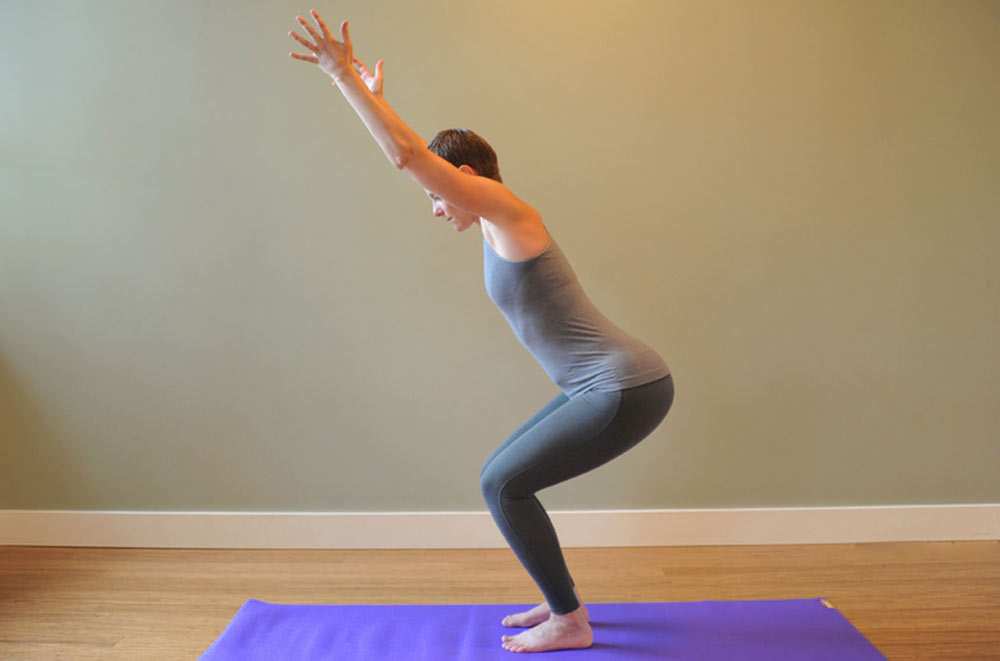
I was born with hypermobile joints. As a child, I could easily flop down into side splits and lay my torso on the floor. There was no resistance anywhere. So when I started practicing yoga, I thought my hypermobile body was perfect for the practice. The so-called “advanced” poses that required extreme flexibility were no problem.
In most workshops, my hypermobility won accolades from teachers and students. In Anusara workshops in particular, extremely flexible students, including me, actually won applause. There were notable exceptions though. In particular, Donna Farhi and Judith Hanson Lasater encouraged me to back off my bendiness and focus on yoga for hip stability.
As much as I respected these teachers—they’re both core teachers for me—I loved cultivating my natural flexibility. That is, until the bill for all that flexible fun came due in my 50s.
At that point, basic skills began to erode. Walking up stairs carrying 10 pounds or more sometimes caused extreme pain in my hips and sacroiliac (SI) joints. Then I lost the ability to get up off the floor without using my hands. Finally, lying on my side and walking more than three blocks were excruciating.
Then the news came: I needed bilateral hip replacements. My official diagnosis was hip dysplasia (shallow hip sockets). My surgeon said that my hips would have worn out no matter what I did. But I’m pretty sure that I sped the process up by focusing so much on flexibility. Habitually practicing at my end range of motion gradually demolished my cartilage and labrum. There was no going back.
Had I listened to Donna and Judith, I may have been able to stall the inevitable, but I couldn’t have stopped it entirely. Since then my practice has changed radically. Yoga for hip stability has become a staple.
It’s All in the Bones
Hip opening has probably always been a focus in Western yoga. But in recent years it has become a fetish. Teachers devote classes to hip opening. (I’ve done this!) There are weekend and weeklong workshops designed to help people move toward those coveted fancy hip-opening poses. (I’ve done this too!)
It’s true that maintaining mobility is important. But if you’re already hypermobile, cultivating even more flexibility creates imbalance. Too much flexibility is just as much a state of imbalance is being too stiff.
If you’re not able to rock those fancy poses, it may not even be because of lack of flexibility. More likely, it’s due to your structure. There’s a wide range of variations in hip joint structure across the population. Our hip sockets can be shallow or deep; positioned externally, internally or somewhere in between; faced upward, downward, outward, inward, etc. And then there are variations in the shape of your femur bone that affect how it articulates with the socket.
Without getting too technical, some people’s hip joints are formed in a way that doesn’t allow for easy external rotation, which is what most of those fancy poses require. If your joints are of this type, the neck of your femur bone will bump up against the edge of your hip socket when you try to externally rotate. No matter how flexible your muscles are, your bones will always have the final say.
Yoga for Hip Stability
In recent years, I’ve come to appreciate the need to balance hip flexibility with hip stability. When I practice or when I teach a class that focuses on hips, I always begin with stabilizing poses. Here are a few ideas for a balanced hip practice:
- Standing balance poses: Standing balance poses such as Vrksasana (Tree Pose), Hasta Padangusthasana (Hand-to-Big-Toe Pose) and others engage the muscles that stabilize the hips, especially the outer thigh muscles. Begin your practice with one or more of these poses. Balancing poses also promote concentration, so starting with them is a great way to connect mind and body at the beginning of your practice.
- Utkatasana (Fierce Pose): Utkatasana strengthens the muscles that help stabilize the hip joints. It also helps strengthen the muscles of the pelvic floor and stabilizes the core.
- Warrior poses: Warrior I, Warrior II and Warrior III (aka Dekasana) strengthen pretty much all the muscles of the legs. They’re especially balancing because they combine stability and flexibility. Really, all the standing poses are helpful. I’ve just chosen the Warrior poses specifically because they are likely the most targeted to stability.
- Prone backbends: Prone backbends such as Bhujangasana (Cobra Pose), Sphinx Pose and Salabhasana (Locust Pose) with its many variations, strengthen the low back and glutes. Strengthening these muscles helps stabilize the SI joint. Most SI joint dysfunction is due to hypermobility in the joint, so it’s important to practice stabilizing poses.
Make sure to add some of these poses into your practice, especially when you’re planning on practicing hip flexibility poses as well. Or especially if you have hypermobile hips. Remember that balance is way more important than rocking fancy poses. Practicing yoga for hip stability will make your practice sustainable for the rest of your life.
